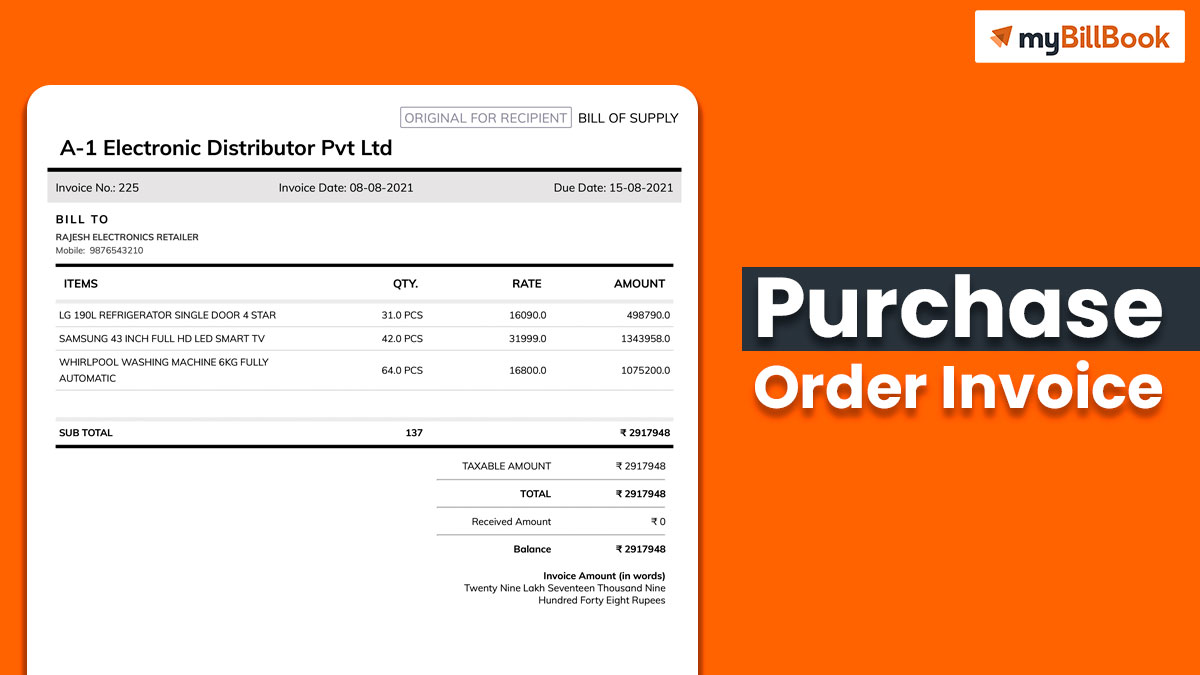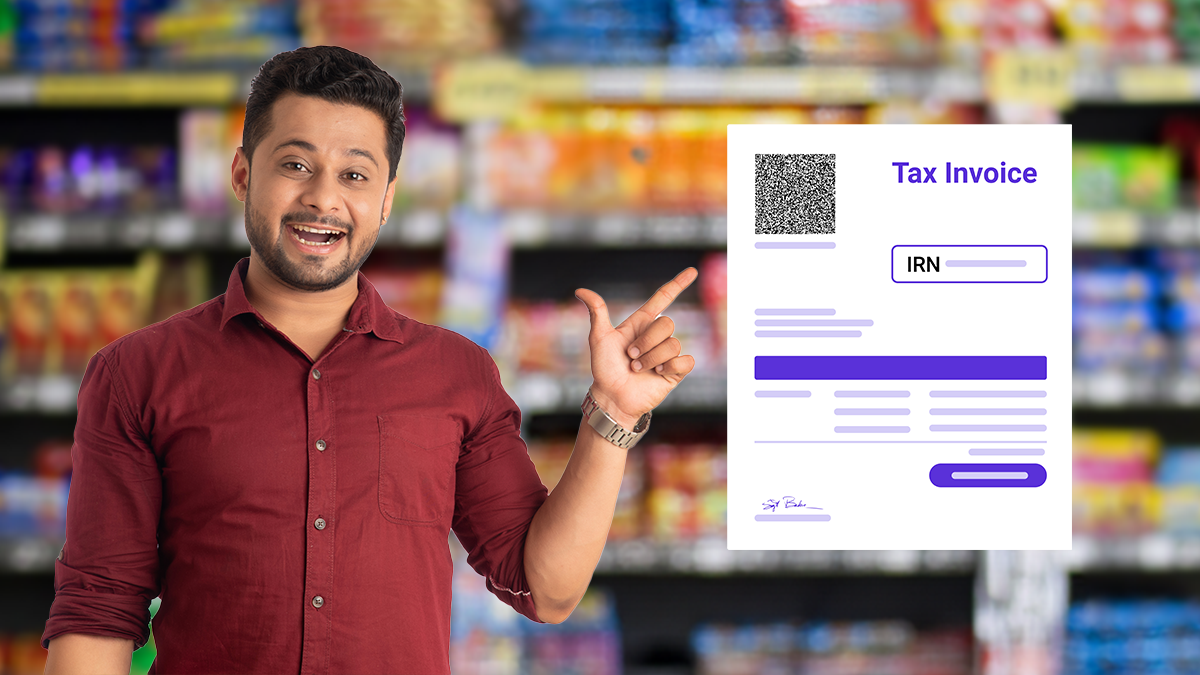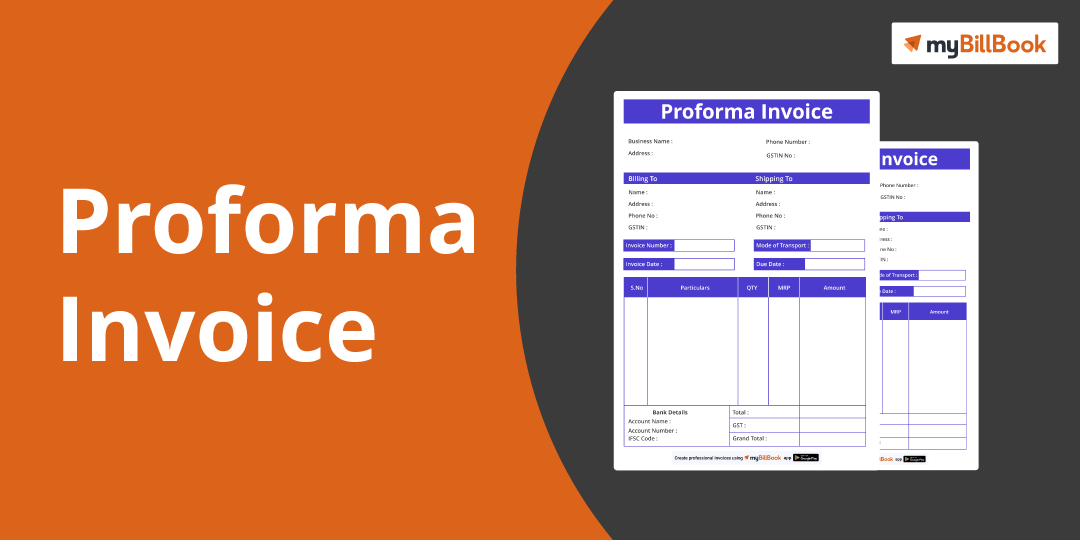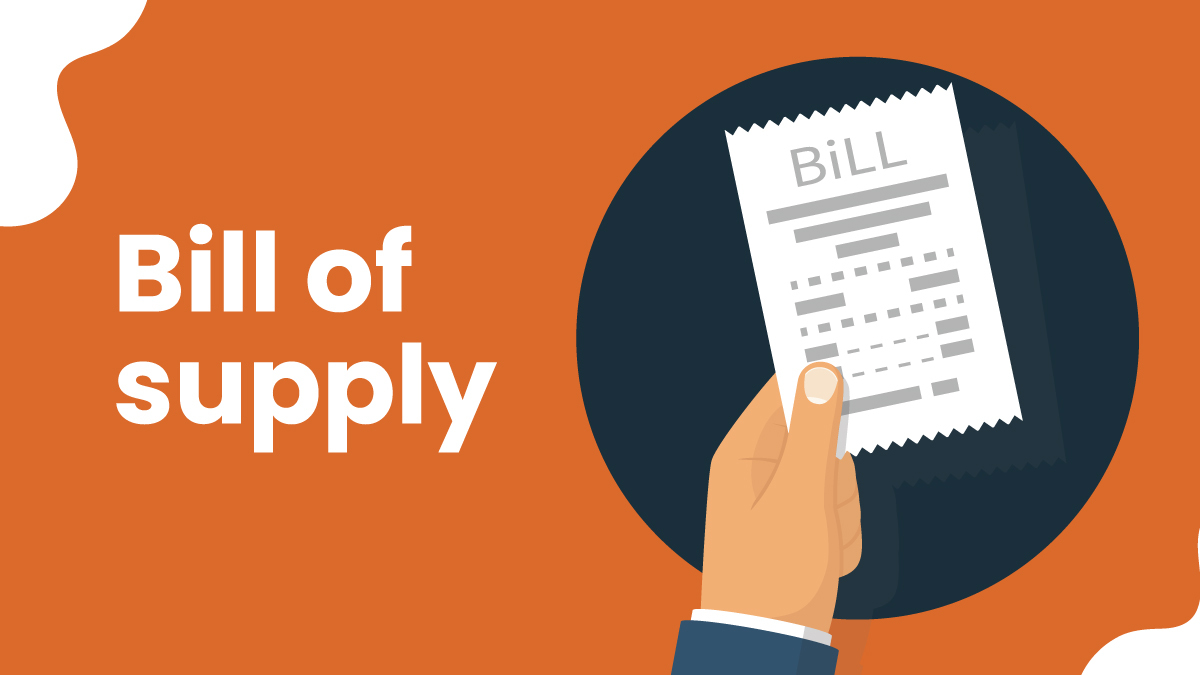A purchase order or PO is known as the formal document which is sent to a vendor by a buyer. This document is sent to track and control the purchasing method. When the vendor accepts the purchase order, the document becomes a lawfully binding contract. A purchase order will include the good and services a buyer want to purchase along with its quantities and agreed prices. The purchase order comprises details like PO number, date of purchase, buyer details, order information, payment terms, and delivery address.
An invoice is an official payment request which is sent by the vendor to their buyers when the order is satisfied. A purchasing invoice will include a list of goods and services that have been delivered to the buyer. It will also specify the amount that the buyer owes to the vendor. Usually, an invoice will include details like invoice number, vendor details, credit or discounts availed, payment schedule or date, and the total amount due.
A purchase order makes it easy to track all the inventories, and the invoice helps in computing the taxes spent. Both invoice and purchase orders are essential for every business as this helps in recording the business transaction and can easily enter the details in the accounting system.
How are purchase orders and invoices similar?
A buyer generally prepares a purchase order when they purchase or order goods and services from a vendor. Whereas the seller generates an invoice to ask for payment for the goods and services provided. This means a purchase order is sent to the seller, and the invoice is sent to the buyer or the consumer. A purchase order comprises order details and the delivery date of the order, whereas an invoice will include the price of the products or services along with terms and conditions of payment and the payment due date.
When a consumer places an order for any product or service, the purchase order is generated. But an invoice is generated after the order is complete. An invoice shows that a sale is done and the purchase order is the contract of sale. To track the accounts payable in the accounting system, buyers use the purchase order and to track the accounts receivable, the seller uses the invoices to record in their book of accounts. The details of the order and shipping will be included in both PO and purchasing invoice and these are the legally binding documents.
Need for using purchase orders
Regardless of the size of the organization, purchase orders are used for several reasons in the purchasing department. Here are some of the reasons that state the need for a purchase order in a business.
- PO sets a clear expectation
A purchase order helps in clarifying the needs of the vendors, and both sellers and buyers can use PO when the orders are not delivered as anticipated.
- PO can manage orders
This is official documentation that gives the details of income or pending deliveries to the procurements, finance, and operation teams.
- It helps in budgeting
When a PO is generated, the purchasers can factor these costs into company budgets and can spend the money more wisely.
- It is a legally binding document
The PO can serve as a legally binding document if there is no formal contract after the vendor accepts the PO. This document will serve as legal protection for both vendor and the buyer.
- Purchase Orders are an essential part of Audit Trails
When an audit happens in the company, the auditors will look for any financial discrepancies. But when the company issues, processes, and records the purchase orders, it helps in ensuring that the company has enough documents to submit to the auditors.
Top 3 differences between a Purchase orders and Invoices
- The major difference between the purchase order and the invoice is the objective.
- PO is issued to request the suppliers to deliver the goods or services. Whereas an invoice is used to request payment from the customers.
- This means the objective of PO is to ensure the fulfillment of the order, and the invoice aims to collect the payment.
- There is another difference between these two, and it is the timing.
- A purchase order is usually sent during the beginning of a transaction to create a contract between the buyer and the seller.
- But a purchasing invoice is sent after the purchase which means at the end of the transaction.
- Moreover, the information included in the purchase order and invoice is entirely different.
- A purchase order will have a detailed description of the order made with the agreed amount and the estimated time for delivery.
- But when it comes to an invoice, the term of the payment, discounts, and the total price is mentioned.
Tips to create an effective purchase order
- Always include the buyer details like the name, address, contact details, and the company logo
- Space should be provided only to mention the delivery address. This is necessary to avoid any confusion between the delivery address and the company address. Also, the delivery address must be highlighted.
- To showcase the legal entity, the format of the purchase order must include the details of business authorisation or other information.
- It is recommended to include the payment criteria apart from the terms and conditions. In case the payment methods are agreed upon previously, then make sure to enter that in black and white.
- Just like the payment terms, the buyer can also add information regarding the terms of delivery in the PO.
- To achieve the goal of the business, the buyer can specify particular clauses that state the acceptance and return of the products.
Benefits of using myBillBook to prepare purchase order
- Increases the speed of the PO process
Generating a purchase order manually will take a lot of time and effort. It can also create errors in the information written in the PO, which can result in extra work and pressure for the whole team. If myBillBook is used, then creating a purchase order can be done by anyone within a few minutes.
- Enhances Productivity
When the purchase order is made quickly without any mistakes using the PO app, it helps in enhancing the productivity of the entire team. Since all the details of the purchase order are available in myBillBook, it helps the accounts departments to record the transaction details quickly. Thus, the company can increase the cash flow and achieve early payment discounts.
- Saves Money and Time
By using myBillBook, every business can reduce labour cost since an employee does not have to waste a lot of time making a purchase order. Also, recording the details in the book of accounts becomes quicker. Hence the employees can work more efficiently in less time, resulting in saving a lot of time and money by the organisation.
- Tracks all activities in real-time
If the purchase orders are created on paper, it becomes very difficult to track the details whenever you want. But if you are using myBillBook, you can check the details and track the order whenever you need it. Besides, all the activities currently happening can be monitored at the same time using the app.
Curious to see it in action? Try our Free Purchase Order Generator Tool to instantly create and download professional POs.








